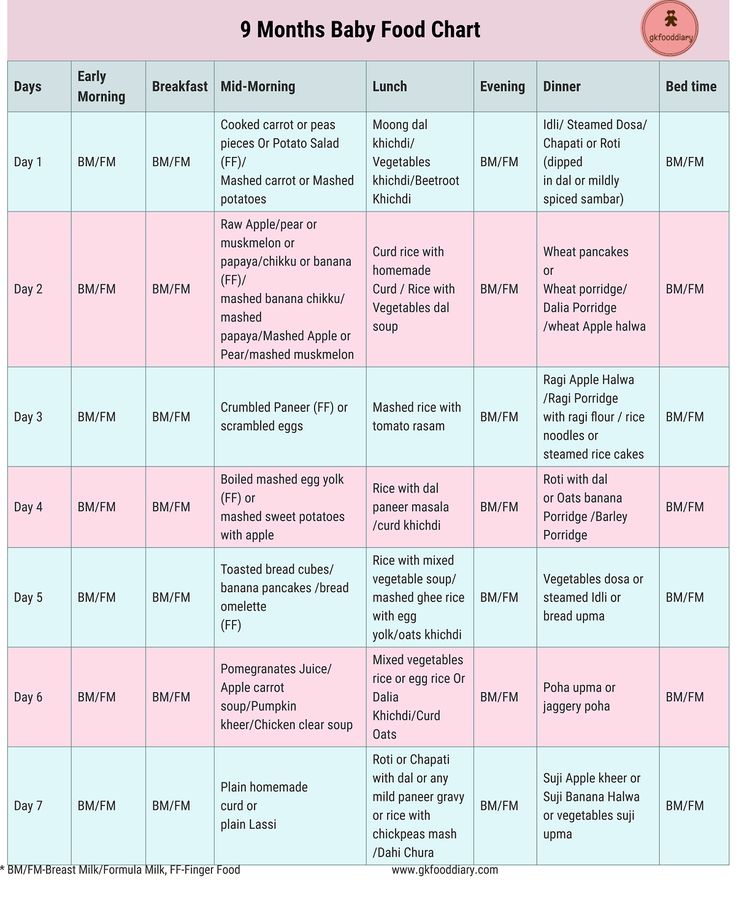Which vegetable to feed baby first
The Best Baby Puree Recipes - Our 10 Favorite Purees
Just finished your 4- or 6-month well-baby checkup and got the seal of approval to start solids from your pediatrician? If you and your baby are ready for Stage 1 purees, you’re both in for an exciting adventure. There are some amazing baby puree recipes out there, with an endless variety of flavors!
When introducing solid foods to your baby, single-ingredient fruit and veggie purees are the best place to start. Also called Stage 1 baby foods, these purees are served in addition to breast milk or formula and play several important roles for your baby:
- Helping them adjust to something other than breast milk or formula
- Developing tongue control, gumming and swallowing capabilities
- Identifying any food sensitivities or allergies
- Encouraging an early acceptance of varied flavors, colors and textures
To help you and your baby get started on this important phase of discovery, here are 10 of the best first baby puree recipes—listed roughly in the order we’d recommend: first the sweeter orange veggies, then the more bitter green veggies and finally everyone’s favorite fruit. Bon appétit!
Our 10 Favorite Baby Puree Recipes
1. Carrot PureeWith a sweet taste and smooth consistency, pureed carrots are typically one of the most well-accepted first baby foods from 4–6 months of age. High in beta-carotene (which turns into vitamin A in the body), carrots help keep little eyes healthy.
Parent tip: If your baby doesn’t seem on board with the carrot puree, it may be the concept of solid food itself that’s confusing. Help your baby learn how to eat solids by giving them a chance to examine it themselves; dab some on the high chair and let them play around before offering it on a spoon.
2. Yam or Sweet Potato PureeSweet potatoes and yams are not the same, but when it comes to starting solids, they may as well be! Both are good sources of vitamin A, B6, C and E. These nutrients contribute to healthy eyesight and immune system function.
Parent tip: Yams and sweet potatoes are great to prepare in bulk.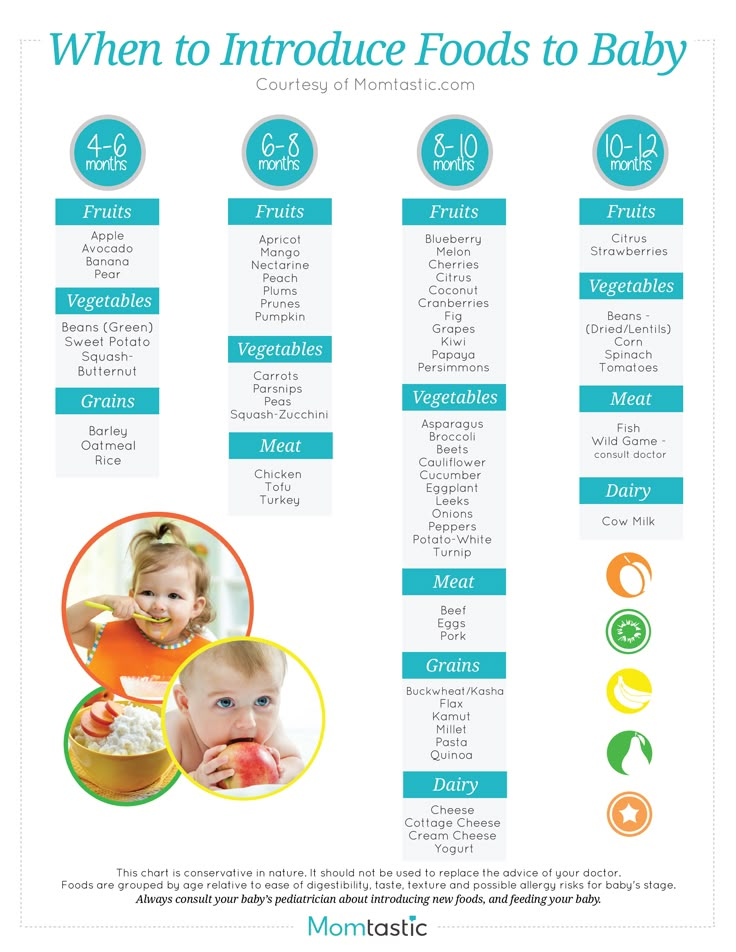 Simply set your oven to 450°F, pierce each sweet potato a few times with a fork and place in the oven on a baking sheet lined with aluminum foil for approximately 50 minutes. When you take them out, the skin will peel right off, and the insides will be perfectly mashable! To extend the life of your mash or puree, batch some out and put it in the freezer. When you’re ready to use it, simply place in the fridge overnight, and you’ll have perfect puree by morning.
Simply set your oven to 450°F, pierce each sweet potato a few times with a fork and place in the oven on a baking sheet lined with aluminum foil for approximately 50 minutes. When you take them out, the skin will peel right off, and the insides will be perfectly mashable! To extend the life of your mash or puree, batch some out and put it in the freezer. When you’re ready to use it, simply place in the fridge overnight, and you’ll have perfect puree by morning.
Butternut squash and acorn squash are packed with folate, calcium and vitamin A, an antioxidant that aids with vision and fights free radicals. Plus, their sweet taste and smooth texture make them an instant favorite for many babies!
Parent tip: You can make raw squash easier to cut by microwaving the entire squash on high for about 2 minutes. The skin and flesh will be much smoother, allowing you to smoothly slice through. Then scoop out the seeds and roast or boil before pureeing.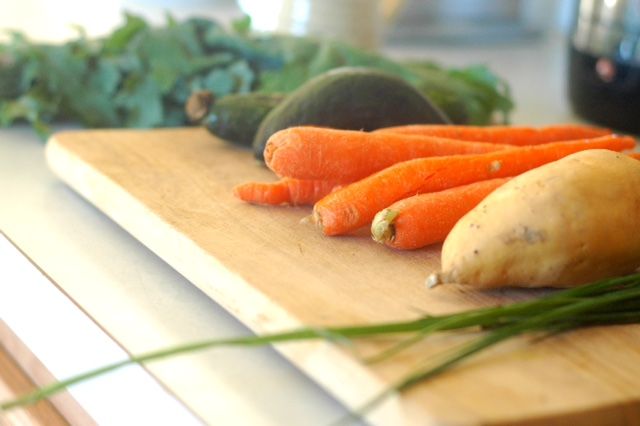
In terms of green veggies, peas are one of the best first baby purees to start with, as they provide interesting texture and taste but aren’t bitter. Peas are also high in vitamin A, vitamin C, vitamin K and protein, making them a great source of many important nutrients for your baby’s early development.
Parent tip: Because they’re such a starchy vegetable, even pureed peas may be too densely textured for very young babies. If your baby is having trouble with the thickness of the puree, use breast milk, formula or water to thin it out.
5. Green Bean PureeAnother hit with babies, green beans are a good source of vitamin K, vitamin C and manganese, which play an important role in a healthy immune system, eyesight, blood clotting and bone development.
Parent tip: If you’re pureeing your own green beans, we recommend straining the puree after blending to extract any fibrous parts. The best first baby purees should be soupy enough to drip off a spoon, but thicker than liquid.
Avocados are rich in a variety of nutrients including fiber, vitamin K, folate and vitamin B6. This creamy green fruit is also packed with heart-healthy fats, which are helpful to your baby’s brain and nervous system development.
Parent tip: Look for ripe avocados that are soft to the touch and easy to mash. To see whether an avocado is ripe, check the nubby stem; if it wiggles, the fruit is probably ready to eat! Keep ripe avocados in the refrigerator so they last longer. Once the puree is made, we recommend feeding it to your baby right away to avoid browning and to offer the freshest experience.
7. Apple PureeApples’ sweet flavor makes them another well-accepted option for first baby foods from 4–6 months of age. Along with dietary fiber for digestive health, apples serve up vitamin C, which is known to help fight free radicals.
Parent tip: For an apple puree that your baby will love, try sweeter, smoother varieties such as Pink Lady, Gala or Golden Delicious. Any apple that bakes well, such as Granny Smith or Fuji, is also a good choice.
Any apple that bakes well, such as Granny Smith or Fuji, is also a good choice.
Like apples, pears also contain dietary fiber and antioxidant vitamin C, helping to support a healthy immune system for your growing baby. Although our favorite is Anjou, babies love the sweet flavor of all kinds of pears!
Parent tip: To introduce a little variety without any added salt, sugar or seasoning, try mixing up how you cook the pears before pureeing. Start with a simple steam or boil and then move onto the richer, more caramelized flavor of baking or roasting.
9. Plantain or Banana PureeThe mild flavor of bananas and plantains is appealing to most babies, and the texture is easy to manipulate. Both of these fruits offer a variety of nutrients, including fiber for healthy digestion, potassium for blood function and antioxidant vitamin C.
Parent tip: Make your own easy banana puree by peeling, slicing and then mashing the fruit with a fork. For a thinner consistency, toss the banana in a food processor and add water, formula or breast milk as necessary.
For a thinner consistency, toss the banana in a food processor and add water, formula or breast milk as necessary.
Boasting plenty of vitamins C and A, peaches are delightfully sweet and another one of the best first baby foods. Their bright yellow-orange color is complemented by powerful antioxidants along with a healthy serving of fiber to aid in your baby’s digestion.
Parent tip: Boil peaches for about 45 seconds to soften before blending. If the peaches are ripe enough, you can skip the boiling and the blender altogether and use a fork or potato masher instead.
Give These Baby Puree Recipes a Try!
It may take some time for your little one to first accept and then enjoy the new flavors of these Stage 1 baby puree recipes, but don’t fret! Enjoy the process and be sure to give your baby multiple opportunities to explore the same puree.
Another reason that we love these fruits and veggies? In addition to being some of the best first baby purees, they’re also perfect for layering with new flavors, textures and spices/seasonings as your baby transitions from Stage 1 to Stage 2 baby foods.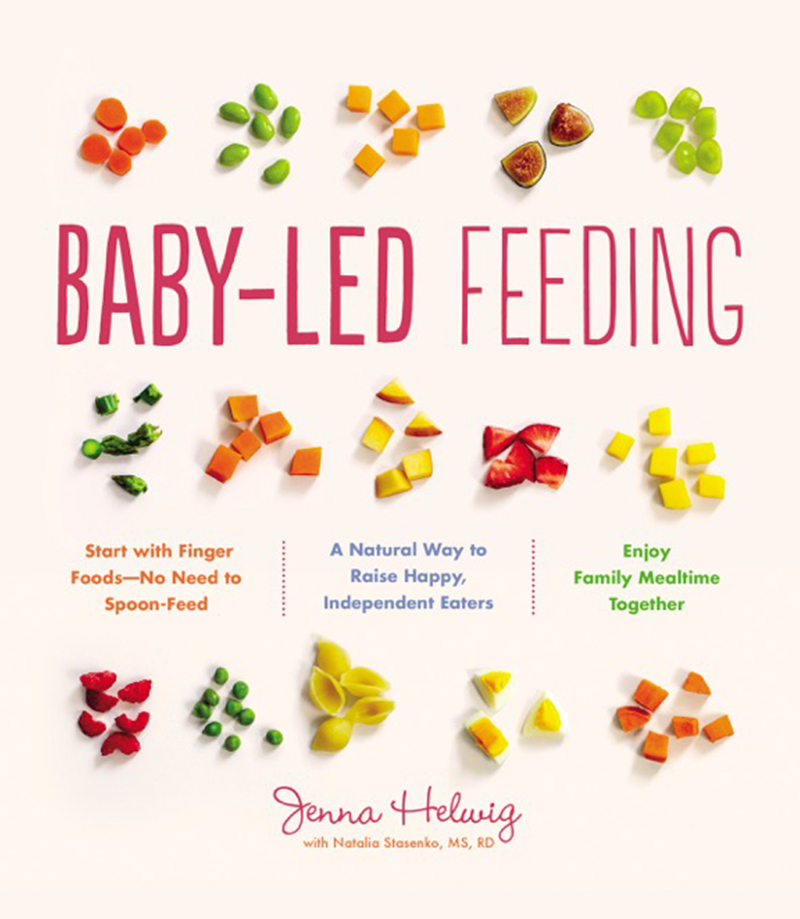 By laying a foundation of well-accepted flavors, you’ll have fun moving onto more exciting combinations of fruits, veggies, grains and proteins.
By laying a foundation of well-accepted flavors, you’ll have fun moving onto more exciting combinations of fruits, veggies, grains and proteins.
If you have questions about feeding your baby, please reach out to Nurture Life’s child nutrition team at [email protected].
Best Vegetables for Babies
We all want our kids to grow up eating a healthy diet — and it’s hard to think of a healthier food than vegetables. Full of complex carbs, fiber, vitamins, minerals, and antioxidants, veggies are a dietary building block of wellness, even for very young children.
But the question always follows: Can you actually get your kid to like vegetables? The battle over a plate of veggies is a classic parent-child power struggle.
Here’s how to not only choose the best veggies for your baby, but prepare them in ways that will help your kiddo become a veggie lover for life.
For babies just starting to eat solids (around 6 months or so), try these six softer, blendable veggies.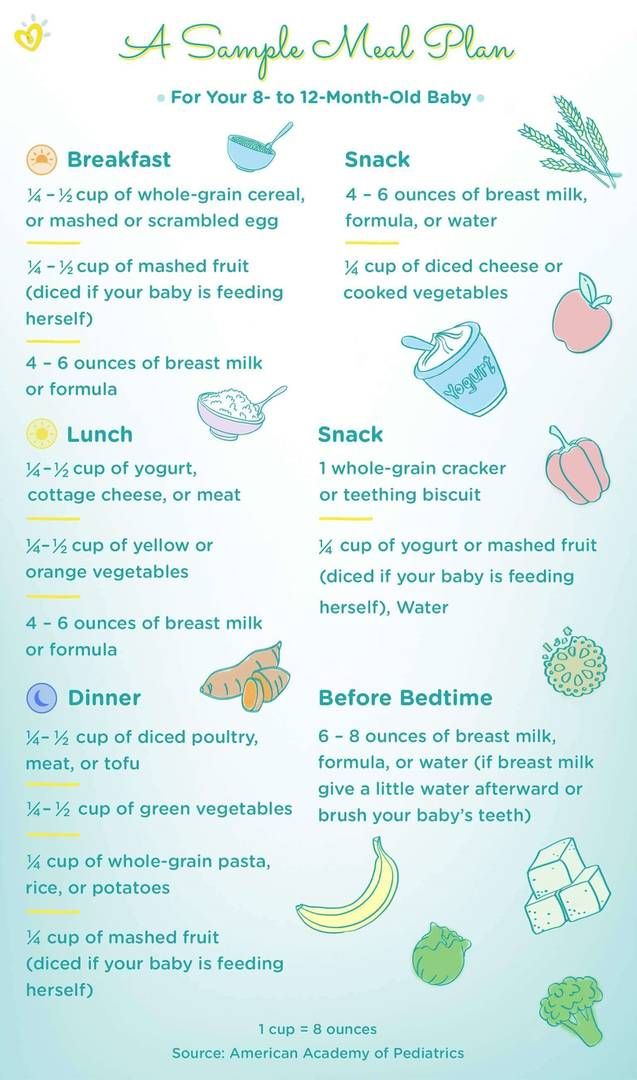
Carrots
Bugs Bunny’s fave orange veggies are a baby food staple for good reason. Once cooked, carrots puree beautifully and offer a not-too-piquant flavor for baby’s sensitive palate.
Plus, they contain plenty of fiber to promote healthy digestion, as well as beta carotene, which converts to vitamin A to boost vision and immune function.
Spinach
Speaking of cartoon characters’ favorite vegetables, remember Popeye’s love for spinach? This leafy green deserves its cartoon reputation for being rich in iron — a nutrient babies especially need for energy and development.
Cooked, pureed spinach is best for younger infants. Add a sprinkle of salt to enhance taste.
Pumpkin
Pumpkin may bring to mind chilly temperatures and falling leaves, but with canned varieties, your child can enjoy the gourds any time of year. Pureed pumpkin’s smooth texture is ideal as one of baby’s first foods, and high amounts of A and C round out its nutrient profile.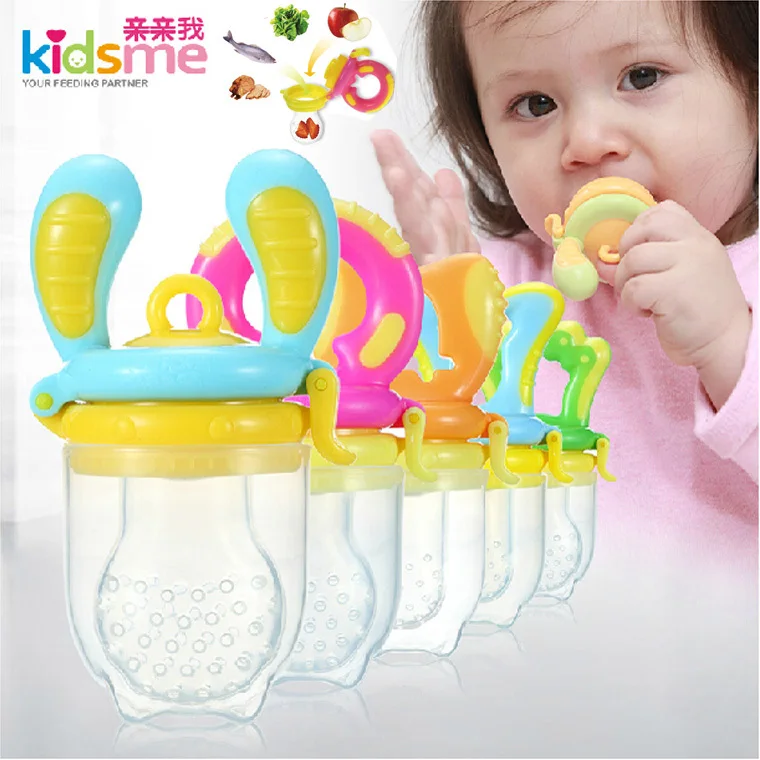
Avocados
Avocados are the heroes of healthy monounsaturated fats. These important macronutrients help develop baby’s brain and nervous system, as well as increase absorption of fat-soluble vitamins A, D, E, and K. Meanwhile, each serving of avocado comes with a sizable dose of fiber and folate.
Keep in mind that a little bit of high fat avocado goes a long way. Start with a serving of about 1 tablespoon, mashed.
Sweet potatoes
Mashed cooked sweet potatoes not only make for easy-peasy serving to your little one, they’re loaded with nutrients, too! Like carrots and pumpkin, sweet potatoes burst with immune- and vision-supporting vitamin A, plus plenty of fiber, manganese, vitamin B6, and vitamin C.
When serving sweet potato to your baby, be sure to mash well and remove the skin.
Peas
Mushy peas might not sound like a culinary delight to adults, but they’re an excellent choice for infants. These little green balls are one of the highest-protein veggies, with 4 grams per serving.
To serve, simply steam frozen peas and blend until pureed. You can even add a bit of breast milk for a thinner consistency.
As your baby becomes more of a solid food pro, try introducing these six veggies.
Broccoli
With cancer-fighting compounds and micronutrients galore, broccoli is an extremely healthy veggie for people of all ages.
Turn your baby on to this cruciferous superfood by serving steamed or roasted broccoli by itself, or add it to pasta dishes, cheesy baked potatoes, or soups cooled to room temperature.
Cauliflower
Has your little eater cut a few teeth? Now’s the time to try cooked cauliflower! The chunky texture of this veggie in a puree (or roasted and roughly mashed) offers just the right level of challenge for new chewers.
Zucchini
When the summer months roll around, take advantage of a bumper crop of zucchini by feeding some to baby. Green and yellow summer squash offer mild flavor and nutrients like manganese, potassium, and vitamin A.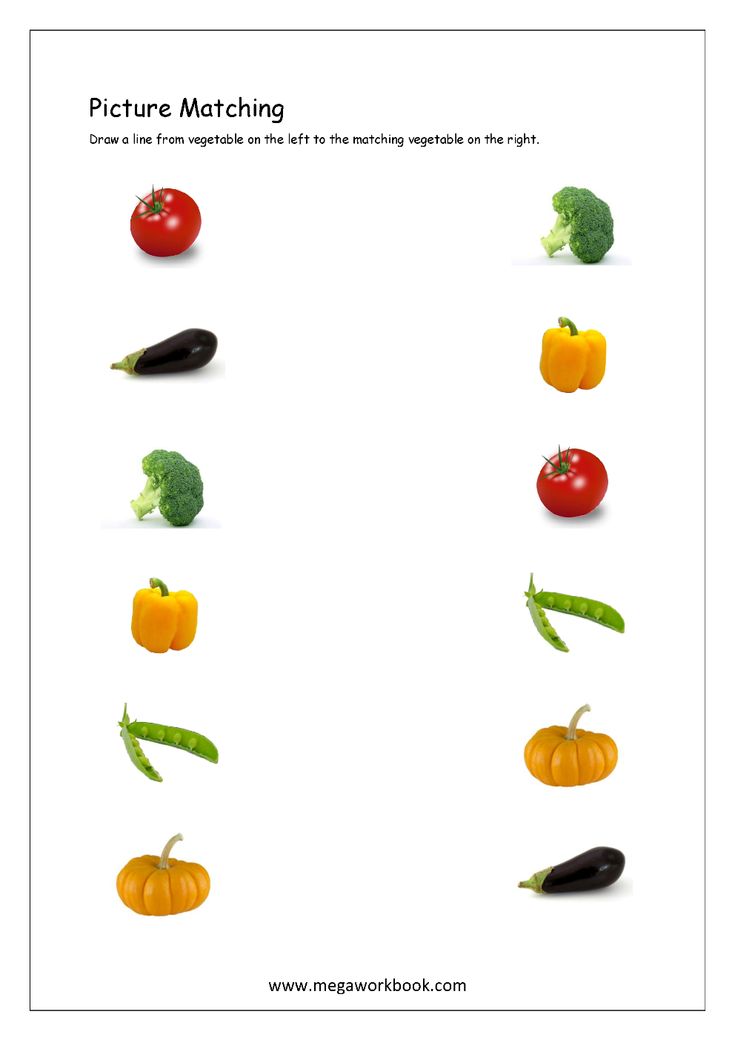
Try serving your baby zucchini prepared as cooked, spiralized “zoodles” with a tomato sauce or thin-sliced and pan-sautéed with a bit of olive oil.
Tomatoes
Before long, your kiddo will likely be chowing down on all sorts of tomato-based foods like pizza and spaghetti with marinara. For now, get them started on the fresh, whole version by serving tomatoes in finely chopped pieces.
Ample water content for hydration plus vitamins C and A add to tomatoes’ value as a healthy first veggie.
Onions
Because of their pungency, you might shy away from feeding your child onions. But these aromatic alliums can be a great way to add flavor to baby’s diet without sodium or anything artificial. Try cooked onions in casseroles or mixed in with other vegetables.
Beets
We’ll be honest: Beets are an acquired taste. That said, you can make them more tempting for baby by pureeing cooked beets with fruits like blueberries or cherries.
The pigments in these colorful blends might leave baby with a red beet “mustache,” but beets’ high content of folate, manganese, and fiber are well worth it.
You can help your child take the lead in the weaning process by providing them plenty of self-feeding opportunities. Incorporate these four bite-sized, easily grasped veggies in baby-led weaning (BLW).
Butternut squash
When first starting with baby-led weaning, opt for softer foods. They’re easier for baby to gnaw, which may allay your concerns about choking. (Still, carefully supervise your baby during mealtimes.)
With their tender texture and sweet taste, pieces of cooked butternut squash are an excellent first round of BLW. Dust cooked pieces with cinnamon for even more flavor.
Bell peppers
Fun fact: Ounce for ounce, bell peppers contain more vitamin C than oranges! This important vitamin not only strengthens the immune system, it acts as an anti-inflammatory antioxidant.
Give baby’s health a leg up by letting them self-feed diced bell peppers. If the peppers’ strong flavor gets a negative reaction, try serving them with cheese or hummus.
Cucumbers
There’s nothing quite so refreshing as a cool, crunchy cucumber. These veggies’ cooling sensation can be especially soothing for babies’ teething gums. To reduce the risk of choking, peel the skin off of cucumbers and dice them into small pieces as part of baby-led weaning.
Edamame
Everyone knows that popping edamame beans out of their shells is half the fun of eating these tender legumes. However, for baby-led weaning, start by placing shelled, slightly mashed edamame on the high chair tray. Their high protein content will fuel baby’s playtime, as well as build muscle tissue.
Vegetables are among the healthiest foods on the planet. Could anything go wrong with feeding them to your baby?
For very young children, there are some safety concerns about nitrates — compounds certain vegetables absorb from soil.
When babies consume excessive amounts of nitrates, it can lead to a condition called methemoglobinemia. Babies with this condition may develop a blue tinge on their hands, feet, and mouth, and may have fatigue and difficulty breathing.
If your baby has any of these symptoms — especially shortness of breath — seek medical attention immediately.
Root vegetables like beets and carrots and leafy greens (especially spinach) do contain relatively high levels of nitrates. But this doesn’t mean you shouldn’t feed these healthy veggies to your baby when they start solids.
Older research from 2005 shows that high amounts of nitrates from vegetables are primarily harmful to babies 3 months of age and younger — but since it’s not recommended to introduce solid foods until around 6 months, this is likely to be a nonissue.
- Baby carrots. “Baby” may be in their name, but baby carrots are not a good choice for infants. Their size and hardness make them a choking hazard.
- Raw celery. The stringy fibers of raw celery can easily lodge in a baby’s throat. If you choose to serve your baby celery, be sure it’s cooked thoroughly and cut into small pieces.
- Corn.
 Creamed or pureed corn is fine for infants, but avoid serving the small, chewy kernels by themselves.
Creamed or pureed corn is fine for infants, but avoid serving the small, chewy kernels by themselves. - Any hard, raw vegetables. According to the American Academy of Pediatrics, chunks of raw vegetables remain a choking hazard until children reach the age of 4 years.
As with any food group, you may run into snags when introducing your child to the wide and colorful world of veggies. Although allergies to vegetables are rare and no vegetable is among the top eight food allergens, it’s always possible for a child to have an allergic reaction to any food.
If your baby has symptoms like vomiting, diarrhea, wheezing, hives, or a rash after eating a particular vegetable, talk to your pediatrician about the possibility of an allergy or food sensitivity.
Contrary to the stereotypes, getting your kid to eat their vegetables doesn’t have to be an epic battle of the wills. By introducing a wide variety of veggies and preparations from a young age, you’ll give your little one the best chance of developing a veggie-loving palate.
Even if your high chair gourmand spurns spinach or turns up a nose at turnips, don’t despair! Keep at it. The more you expose your child to any food, the more likely they are to eventually accept (and even enjoy) it.
Complementary feeding scheme for children under one year old
Article author: Ovchinnikova Evgeniya Vadimovna , pediatric gastroenterologist, pediatrician
The introduction of complementary foods to a baby is quite an important event. Finally, a child who has previously only tried mother's milk or formula will get acquainted with new tastes, the list of which will constantly expand.
Complementary foods are not only food, they are also new experiences. According to what scheme to introduce complementary foods to a child under one year old? Says pediatrician Evgenia Vadimovna Ovchinnikova.
In a newborn baby, the intestines are practically sterile, and the digestive system is in an immature state, so it can only absorb breast milk or adapted formulas.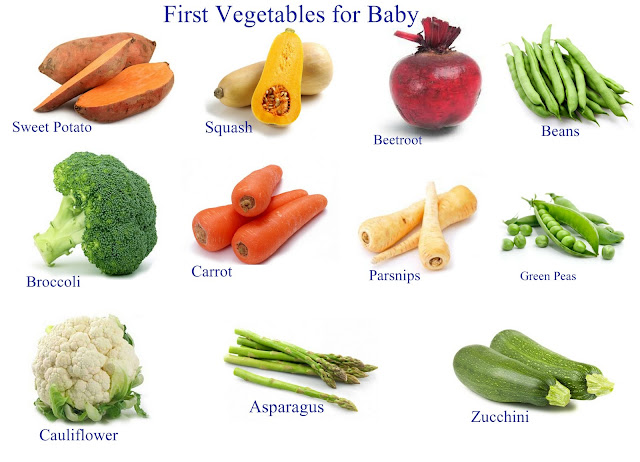 But gradually the gastrointestinal tract matures, and by 4-6 months, enzymes are already being produced that contribute to the absorption of other types of food. The optimal time for the introduction of complementary foods (in terms of both the maturity of the gastrointestinal tract and the formation of food tolerance) is the age from 4 to 6 months. Early introduction of complementary foods, as well as the introduction after 6 months, increases the risk of developing allergic diseases.
But gradually the gastrointestinal tract matures, and by 4-6 months, enzymes are already being produced that contribute to the absorption of other types of food. The optimal time for the introduction of complementary foods (in terms of both the maturity of the gastrointestinal tract and the formation of food tolerance) is the age from 4 to 6 months. Early introduction of complementary foods, as well as the introduction after 6 months, increases the risk of developing allergic diseases.
In addition to reaching a certain age and developing tolerance to the adoption of new food components, you need to pay attention to such indicators as weight (it should more than double from the moment of birth), the absence of tongue movements and the presence of food interest (the baby should become interested in other foods besides milk). Before starting to introduce new foods, you should consult with your pediatrician.
At 5 months - vegetables
You need to start introducing complementary foods gradually and carefully, the amount of the first sample is at the tip of a teaspoon. When introducing a product, carefully monitor the reaction of the child's body: are there any allergies, are there any problems with the stomach, stool, etc. The first complementary food, as a rule, is vegetable and monocomponent. It is administered during lunch, after which the baby needs to be supplemented with milk. You can start with squash or zucchini, then add cauliflower, broccoli, and lastly pumpkin and carrots.
When introducing a product, carefully monitor the reaction of the child's body: are there any allergies, are there any problems with the stomach, stool, etc. The first complementary food, as a rule, is vegetable and monocomponent. It is administered during lunch, after which the baby needs to be supplemented with milk. You can start with squash or zucchini, then add cauliflower, broccoli, and lastly pumpkin and carrots.
The very first additions should be fairly thin, but the consistency should be gradually increased until the consistency of puree is obtained. For a week, if everything is fine, you can bring the amount of one product from a teaspoon on the first day to 150 grams on the seventh. Having introduced one type of vegetable in this way (for example, zucchini), next week you can introduce cauliflower in a similar way. It is advisable to take a month to get acquainted with vegetables. Bringing each product to the age norm, different types of vegetables can be mixed.
At 6 months - porridge
At 6 months, when several types of vegetables have already been introduced, you can try porridge.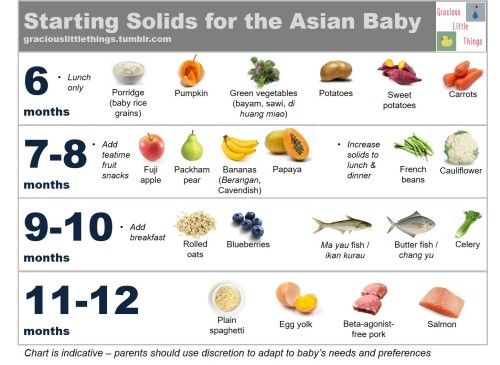 The first cereals of the baby should not contain milk and gluten. These products are practically not absorbed by the gastrointestinal tract and have a bad effect on its mucosa. Alternatively, you can add a little breast milk or formula to the porridge if the child is reluctant to eat porridge on the water. Recommended rice, corn and buckwheat porridge. The scheme for introducing cereals is exactly the same as in the case of vegetables. It is important to gradually increase the amount, and in one week to introduce only one type of cereal. It makes sense to give porridge in the second morning feeding. Closer to 8 months, in addition to cereals, you can give your child a taste of applesauce.
The first cereals of the baby should not contain milk and gluten. These products are practically not absorbed by the gastrointestinal tract and have a bad effect on its mucosa. Alternatively, you can add a little breast milk or formula to the porridge if the child is reluctant to eat porridge on the water. Recommended rice, corn and buckwheat porridge. The scheme for introducing cereals is exactly the same as in the case of vegetables. It is important to gradually increase the amount, and in one week to introduce only one type of cereal. It makes sense to give porridge in the second morning feeding. Closer to 8 months, in addition to cereals, you can give your child a taste of applesauce.
After 8 months
After 8 months you can start introducing meat puree, yolk and potatoes. It is preferable to give quail yolk, but chicken yolk is also possible if the child does not have a negative reaction. As for meat, the first product of the baby can be rabbit fillet, as the most low-fat and hypoallergenic product. After it, you can give a turkey. You need to start with 3 grams, gradually bringing up to 50 grams per day. So the child will have a breakfast consisting of porridge and fruit, and a lunch of vegetables and meat. The further diet will gradually increase: after an apple, you can introduce mashed prunes, then pear, etc. As for potatoes, its maximum amount should not exceed 50 grams per day.
After it, you can give a turkey. You need to start with 3 grams, gradually bringing up to 50 grams per day. So the child will have a breakfast consisting of porridge and fruit, and a lunch of vegetables and meat. The further diet will gradually increase: after an apple, you can introduce mashed prunes, then pear, etc. As for potatoes, its maximum amount should not exceed 50 grams per day.
After 9 months
It's time to get acquainted with fermented milk products, the introduction of which has its own peculiarity: they should enter the diet especially smoothly and slowly. The first is children's cottage cheese, starting with one teaspoon, then kefir, only 5-10 ml. From these products you can eventually make an afternoon snack. Dairy products for children should not contain sugar or other additives.
After 10 months, if the child already has teeth, you can give him pieces of familiar fruit to chew on. If there are no teeth or very few, then before they appear, the food should be puree.
Important to know:
- Complementary foods for up to a year are not yet full-fledged feeding, this is only an acquaintance of the baby with different products;
- If the child does not want to eat complementary foods, do not force him, and do not add sugar or salt to the proposed product. You just need to postpone the introduction of this food for a week or two;
- In some cases, for example, with a small weight gain, you can start complementary foods not with vegetables, but with porridge;
- If the child has allergies, indigestion, other health problems, the product that caused the negative reaction should be discontinued;
- Complementary foods should not be introduced if the child is sick;
- For children with allergies, children with any diseases, the complementary feeding scheme may differ from the generally accepted one, a pediatrician's consultation is necessary;
- Do not give juices, fresh vegetables, cereals with gluten, sugary foods, cow's and goat's milk until the age of one.

Make an appointment with a pediatrician
Be sure to consult a qualified specialist in the field of childhood diseases at the Semeynaya clinic.
To find out prices for pediatrician appointments or other questions, follow the link below - Polina Alexandrovna, what is complementary foods?
Complementary foods are foods that are different from the breast milk or formula that a child is used to receiving. Complementary foods are a gradual transition from dairy nutrition to a common table.
— In what cases is it recommended to start complementary foods with vegetables rather than cereals or fruits?
- WHO does not give specific recommendations, since different countries have different menus. The Union of Pediatricians of Russia recommends vegetable purees or cereals as the first complementary foods.
- Introduction of complementary foods before 6 months, tendency to constipation or excessive weight gain in a child - it is recommended to start with vegetable foods.

- The introduction of complementary foods at 6 months, insufficient weight gain or frequent stools in a child is a reason to prepare porridge to start complementary foods.
— What vegetables to start complementary foods with and how to introduce a second vegetable into baby’s complementary foods?
- For the first feeding, hypoallergenic vegetables are recommended, which are less likely to cause allergies - zucchini, cauliflower or broccoli. Which vegetable from the list will be the first, and which next - it doesn’t matter, you can focus on the feelings of the child and the convenience of the mother.
- Polina Alexandrovna, vegetable puree or juice with pulp - which is more useful, how to combine?
- Fruit and vegetable juices are not recommended as the first feeding - they have much less fiber, dietary fiber compared to vegetable purees. In addition, the sugar from the juice is absorbed quickly and the concentration of sugar in the blood rises sharply. Therefore, basically complementary foods begin with monocomponent vegetable purees.
Therefore, basically complementary foods begin with monocomponent vegetable purees.
In the future, juices may be present in the baby's diet, and they can be combined with vegetables. But if the mother introduces juice, then let the child not give anything new. It is impossible to introduce several different products into one meal - if the baby is given vegetable puree and fruit juice at the same time, then with an allergic or other reaction, the mother does not understand what she came to.
— How many vegetables to give in the first feedings?
- The introduction of new products in the first feeding begins with the so-called microdose - this is ½ or one teaspoon. On the second day, the portion increases to 2-3 teaspoons. In a week, its volume is brought to the age norm. The main thing is to increase the portion gradually.
- What time of day to give vegetable complementary foods - is it considered better in the second feeding?
- By and large, this is fair and convenient - they began to give vegetables to the child for lunch and continued to do so after expanding the diet. Neither mother nor child will have to change the structure of feeding and rebuild.
Neither mother nor child will have to change the structure of feeding and rebuild.
You can give such complementary foods at other times, but remember the rule - to introduce new products in the morning and monitor the reaction of the child. When the introduction of porridge begins, vegetables will shift to a later meal, and porridge to an earlier one.
- Do I need to add formula milk or breast milk to the puree?
- Breast milk and infant formula are not added to puree. But vegetables are less satisfying than dairy food, so the child can receive supplementary feeding with mother's milk or formula immediately after taking vegetable puree. In this case, it is necessary to observe the age norm for breastfeeding or artificial feeding.
- Is it correct to give vegetables first and then breast milk/formula or vice versa?
- When introducing complementary foods, the child does not yet know that, in addition to breast or bottle, you can get enough in another way. If breast or formula is given first, the baby will be full by the time mom gives vegetables. The kid with great pleasure and interest tries unusual food when he is hungry.
- Is there a procedure for introducing vegetables into complementary foods by months?
- The scheme and sequence of introducing vegetables for complementary foods is simple - you need to start with hypoallergenic foods, expand the diet with vegetables that are more likely to cause childhood allergies:
- zucchini, cauliflower, broccoli - 4-6 months;
- pumpkin, carrot, potato - 6 months;
- beets, tomatoes and other vegetables - 7-8 months.
Interesting: according to my mother, vegetable puree of industrial production is less tasty than homemade. In practice, many babies refuse homemade puree and are happy to eat ready-made complementary foods from the first spoon.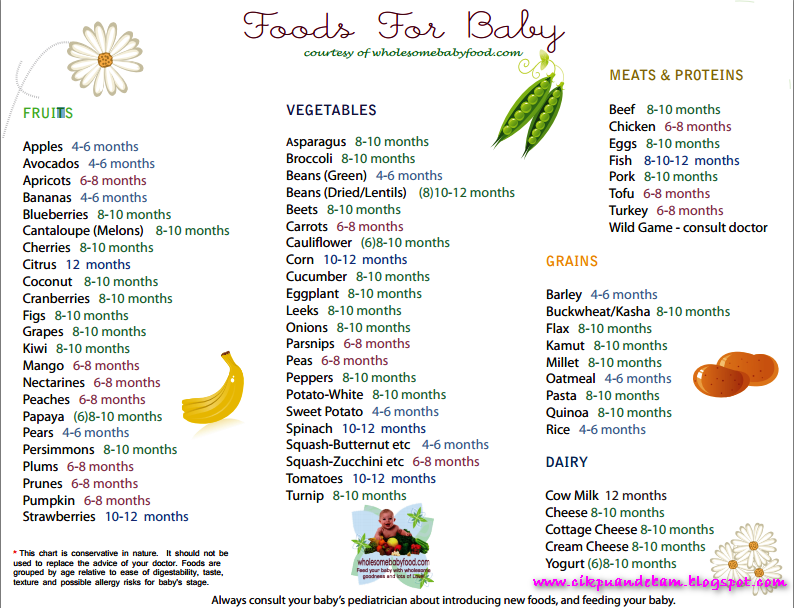
- How to cook vegetables for feeding babies on your own?
- When preparing baby food, mom needs:
- minimum water to cover vegetables;
- cook vegetables under the lid for a minimum period of time without overcooking them - this way nutrients and vitamins are preserved as much as possible;
- when grinding, add the decoction to the puree - then its consistency will not be very dense; grind the product carefully - there should be no pieces and unground parts in the puree.
- How long does the cooked puree last?
- The recommendations will be the same as for the factory puree. For more than a day, self-prepared baby food is not stored. And the food that you still plan to give your child is better not to put it in the refrigerator door with the highest possible temperature, but on the middle shelves.
- Where can I get proven recipes and which sources should I trust?
- In the nutrition of a child under one year old, there is no question of special dishes. Vegetables are boiled or steamed without salt. It is important to introduce vegetables into the child's diet according to his age. Mom can also focus on preferred flavor combinations.
Vegetables are boiled or steamed without salt. It is important to introduce vegetables into the child's diet according to his age. Mom can also focus on preferred flavor combinations.
- Polina Alexandrovna, what vegetables should not be given to babies?
- There are no vegetables that cannot be given to a child under one year old (allergies often occur on berries and red fruits - they are not recommended to be tried). After eight months, the baby gets acquainted with almost all vegetables.
Things to look out for:
- Bright red vegetables have a higher potential for allergy. We introduce the baby to such vegetables later.
- It is difficult to choose quality vegetables. An allergic reaction may occur not to a vegetable, but to the substances with which it is processed.
Advice for mom: use ready-made commercial food for children or buy vegetables from trusted sellers.
MAMAKO ® ORGANIC cereals are a combination of organic cereals and fruits and 32% ORGANIC farm goat milk.
— What if the child does not like vegetables?
- When a child is reluctant to eat vegetables, you should not force him - the more you force, the more the baby resists attempts to feed him. Your child will not immediately appreciate the vegetable you give. It is important to offer him mashed potatoes regularly and persistently enough, but not overdo it. If the child does not like one vegetable during the week, offer another. In addition, vegetable puree from different manufacturers has different tastes, and you can choose the one that your baby will like.
Advice for mom: Even if you haven't started complementary foods yet, your baby needs to be introduced to the culture of eating.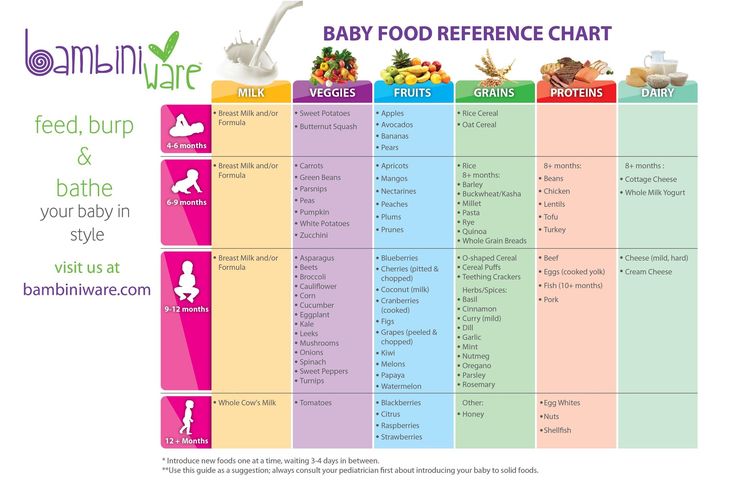 Dine with your baby - he is interested in seeing what mom and dad are eating, and he should want to try adult food and join the general diet.
Dine with your baby - he is interested in seeing what mom and dad are eating, and he should want to try adult food and join the general diet.
— What kind of vegetable dishes can be offered to older children?
- Firstly, older children eat no longer homogeneous puree. Every month we offer the child larger and denser pieces (at first small and soft, so that the baby can easily chew them, and then, when he begins to chew well enough, larger pieces).
Secondly, a child of 7-8 months gets acquainted with new dishes (soups, dairy products). And at this age, goat's milk cream soup with pumpkin or spinach is well suited for a children's diet.
At the stage of preparation for the introduction of complementary foods, it is important not to miss the food interest - you should introduce the baby to meals and introduce him to the exciting process. When your baby is ready, you can offer him hypoallergenic vegetables in a gentle vegetable puree.









